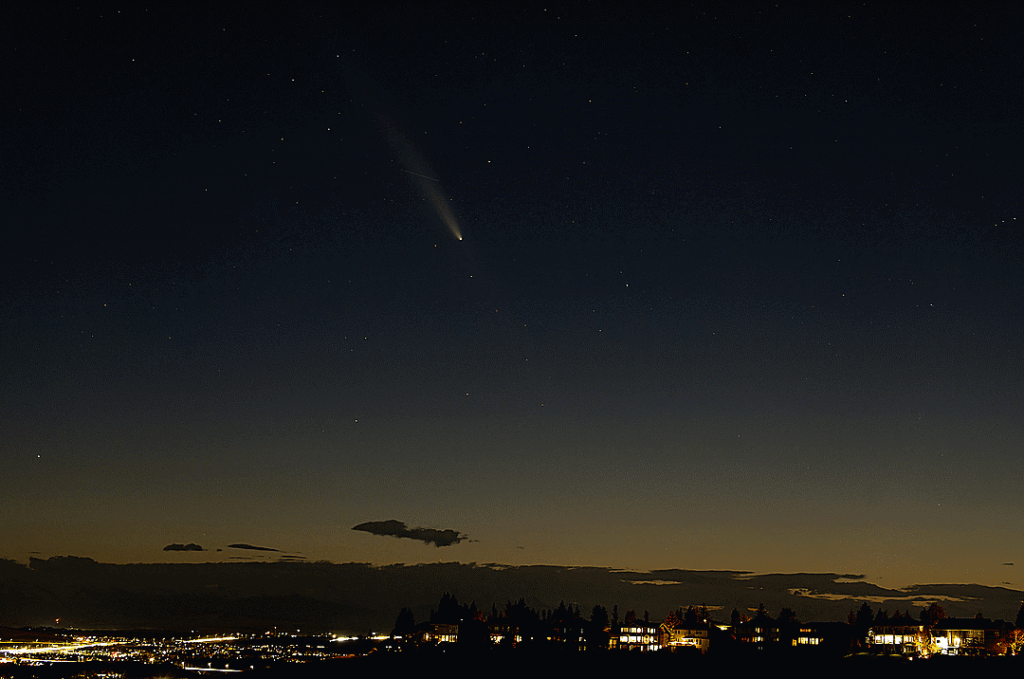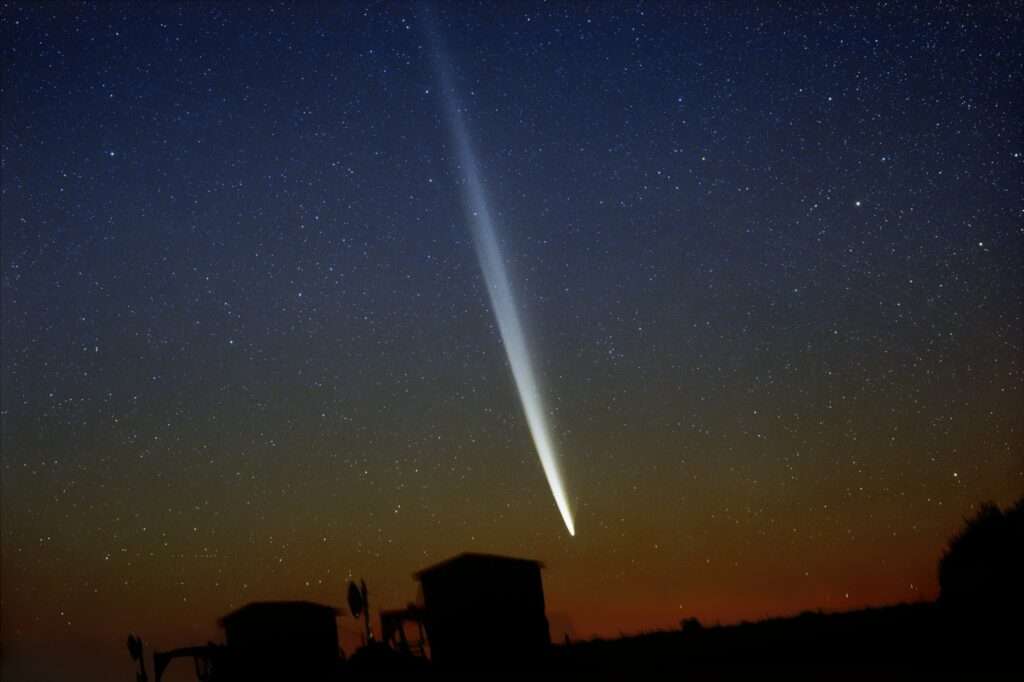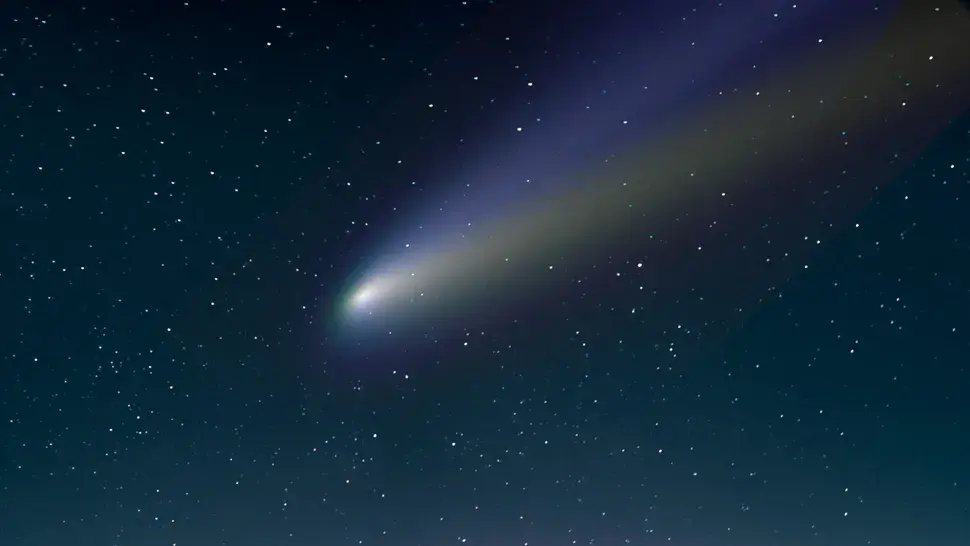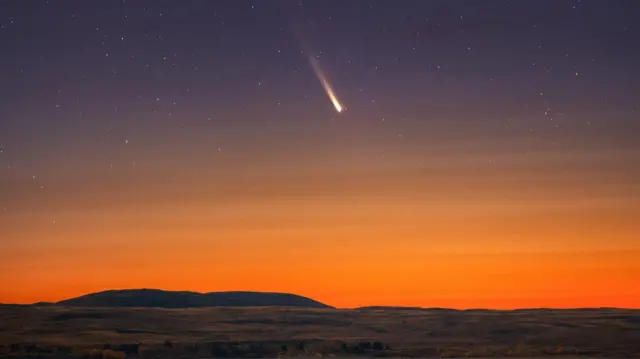Table of Contents
ToggleComet C/2023 A3 and Its Appearance over Malta
When celestial wanderers like comets make their way into the inner Solar System, skywatchers everywhere hold their breath in hopes of glimpsing them. One such visitor, Comet C/2023 A3 (Tsuchinshan–ATLAS), became the talk of the astronomy community in 2024 — and yes, it was visible (with effort) from Malta under favorable conditions.
What is Comet C/2023 A3?
Comet C/2023 A3, also called Tsuchinshan–ATLAS, is a long-period comet believed to have originated in the distant Oort Cloud, a region at the very edge of our Solar System. It was discovered in early 2023 by two observatories — the Purple Mountain Observatory in China and the ATLAS survey in South Africa — which is why it carries both names.
Its orbit is highly elongated, suggesting that it may take tens of thousands, or even millions, of years to complete one trip around the Sun. After passing close to our star, it could even be flung completely out of the Solar System, never to return. The comet reached its closest point to the Sun, or perihelion, on 27 September 2024, coming within about 58 million kilometers of the Sun — roughly the same distance as Mercury’s orbit.
Astronomers had been watching this visitor closely because it had the potential to become quite bright by mid-October 2024. Many hoped it would be visible to the naked eye, though, as always with comets, its behavior was unpredictable. Some suspected it might fragment or fade before reaching its brightest phase. Still, for observers in Malta and across the Northern Hemisphere, it was a rare opportunity to witness a comet passing through our skies.

Observing from Malta: Challenges and Opportunities
Malta’s location in the central Mediterranean offers relatively clear skies for much of the year, but the islands also suffer from widespread light pollution. That makes it difficult to see faint astronomical objects from most populated areas. Nevertheless, with a bit of planning and the right conditions, the comet could be spotted from darker sites across the islands.
In late September and early October, Comet C/2023 A3 remained close to the Sun in the sky, making it tricky to spot in the bright twilight. By mid-October, however, the geometry improved: the comet climbed higher in the western evening sky just after sunset, providing the best window for viewing from Malta. Around this time, it also passed closest to Earth, increasing its brightness.
Local astronomers and photographers reported sightings from dark-sky areas such as Dingli Cliffs, Gozo, and the rural outskirts of Rabat. A few lucky observers managed to capture long-exposure images showing the comet as a faint, glowing smudge with a subtle tail stretching away from the Sun. These photos quickly circulated on social media and in local news outlets, inspiring others to look up and try to spot it for themselves.
How to See It
For those who attempted to view the comet from Malta, patience and preparation were key. Observers followed a few simple guidelines:
Choose a dark location. Coastal and urban light pollution can wash out faint celestial objects. High ground away from towns offered the best visibility.
Observe just after sunset. Because the comet was near the Sun’s path, the best viewing came during the brief window of twilight before the sky grew too dark or the comet too low.
Use binoculars or a small telescope. Even though the comet approached naked-eye visibility, optical aid made spotting its fuzzy glow much easier.
Check star charts or apps. Knowing the comet’s expected position relative to bright stars helped narrow down the search.
Be patient and let your eyes adjust. It could take several minutes for the faint light to become noticeable.
The weather, of course, played its part. Malta’s autumn skies can be hazy, especially near the horizon, so only on the clearest nights could the comet be seen well.
What Observers Saw
To the naked eye under dark skies, Comet C/2023 A3 appeared as a small, diffuse patch of light — not a sharp point like a star, but a soft, misty glow. Through binoculars, a short tail became visible, pointing away from the Sun’s direction. In long-exposure photographs, the tail extended several degrees across the sky, revealing delicate structure and subtle color that human eyes could not see unaided.
As the nights passed, the comet’s position changed noticeably against the background stars. It moved steadily upward and westward, fading slowly as it receded from both the Sun and the Earth. Although it never turned into a spectacular “great comet,” even a faint sighting carried a sense of wonder — a reminder that we were seeing an object formed billions of years ago, preserved in the deep freeze of the Solar System’s outermost reaches.

Why It Mattered
For Maltese skywatchers, the appearance of Comet C/2023 A3 was more than a scientific event — it was an invitation to reconnect with the night sky. Many people who had never used a telescope found themselves gazing westward after sunset, curious to catch a glimpse of a celestial visitor older than humanity itself.
Astronomers on the islands used the opportunity to highlight the importance of protecting Malta’s dark skies. Even modest reductions in unnecessary lighting can reveal a universe otherwise hidden by the orange glow of streetlamps. Events like this remind us that the cosmos is not distant or inaccessible; it’s right above us, waiting to be noticed.
A Once-in-a-Lifetime Visitor
By late October, Comet C/2023 A3 had already begun to fade, retreating into the outer Solar System. For most of us, it was a fleeting encounter — a few quiet evenings of sky-watching, a handful of photographs, a moment of awe shared under the Maltese sky.
It’s humbling to think that this icy traveler may not return for tens of thousands of years, if it survives at all. Yet for those who saw it — even as a faint glimmer in the twilight — the memory endures: a whisper from the farthest reaches of our Solar System, passing over Malta before continuing its long journey into the dark.




